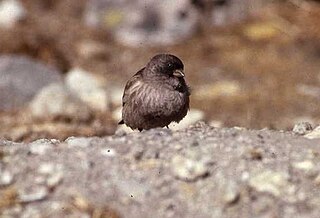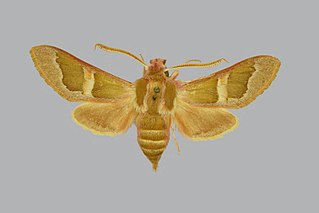
The Turkish hamster, also referred to as Brandt's hamster, Azerbaijani hamster, or avurtlak, is a species of hamster native to Turkey, Armenia and other surrounding nations. The Turkish hamster, first catalogued in 1878, is a fairly close relative of the Syrian or golden hamster, though far less is known about it, and it is rarely kept as a pet. The population of the Turkish hamster is said to be declining in the wild, yet this hamster is often used in laboratory testing. Turkish hamsters have lifespans of about two years and are solitary, nocturnal animals, which practice hibernation. They are reported to be more aggressive than other members of the family Cricetidae. They are tan and dark, sandy brown in color. Like all hamsters, the Turkish hamster has cheek pouches that allow it to carry large amounts of food at one time.

Mesocricetus is a genus of Old World hamsters, including the Syrian or golden hamster, the first hamster to be introduced as a domestic pet, and still the most popular species of hamster for that purpose.

Brandt's mountain finch, also known as the black-headed mountain-finch, is a species of finch in the family Fringillidae. It is found in Afghanistan, Bhutan, China, India, Kazakhstan, Nepal, Pakistan, Russia, Tajikistan, and Turkmenistan. Its natural habitat is temperate grassland.
Orthrias brandti is a species of ray-finned fish in the family Balitoridae. It is found in Georgia and Turkey. Can be found also in Northern Greece, in the rivers Strymon and Nestos, so probably also in South Bulgaria.
Catocala brandti is a moth of the family Erebidae first described by Hermann Heinrich Hacker and Peter Kautt in 1999. It is found in Greece, south-eastern Turkey, Iran and Israel.

Alitta is a genus of marine annelids in Nereididae family. There are three recognised species within the genus, Alitta grandis, Alitta succinea and Alitta virens. Alitta brandti Malmgren, 1865 was originally considered part of the genus, but is now accepted as Neanthes brandti.

Rethera brandti, the lesser madder hawkmoth, is a moth of the family Sphingidae. The species was first described by Otto Bang-Haas in 1937. It is found from south-eastern Turkey and north-eastern Iraq to southern Iran along the Zagros Mountains and then into western Pakistan. It is also present in the Alborz and Kopet Dag Mountains of northern Iran. The habitat of ssp. brandti consists of sparsely vegetated slopes up to 2,000 meters, while the habitat of ssp. euteles consists of hilly steppe and desert-edge vegetation between 1,500 and 2,500 meters altitude.
Cochylimorpha brandti is a species of moth of the family Tortricidae. It is found in Iran.

Tmesisternini is a tribe of beetles in the subfamily Lamiinae containing the following genera:

Tmesisternus is a genus of longhorn beetles belonging to the family Cerambycidae, subfamily Lamiinae.
Tmesisternus agriloides is a species of beetle in the family Cerambycidae. It was described by Francis Polkinghorne Pascoe in 1867.
Tmesisternus brassi is a species of beetle in the family Cerambycidae. It was described by Gressitt in 1984.

Tmesisternus distinctus is a species of beetle in the family Cerambycidae. It was described by Jean Baptiste Boisduval in 1835.
Tmesisternus dubius is a species of beetle in the family Cerambycidae. It was described by Xavier Montrouzier in 1855.
Tmesisternus excellens is a species of beetle in the family Cerambycidae. It was described by Per Olof Christopher Aurivillius. It is known from Papua New Guinea.

Tmesisternus griseus is a species of beetle in the family Cerambycidae. It was described by James Thomson in 1865.
Tmesisternus jaspideus is a species of beetle in the family Cerambycidae. It was described by Jean Baptiste Boisduval in 1835.
Tmesisternus schaumii is a species of beetle in the family Cerambycidae. It was described by Francis Polkinghorne Pascoe in 1867. It is known from Moluccas, Australia, and the Solomon Islands.

Tmesisternus venatus is a species of beetle in the family Cerambycidae. It was described by James Thomson in 1864.
Eucryptorrhynchus brandti, the snout weevil, is an insect in the weevil family. In its native range in China, it causes significant damage to its single host, Ailanthus altissima, tree of heaven. Thus the weevil is under study as a biological control of tree of heaven in regions where the tree is non-native. In particular, the insect acts as a vector for Verticillium nonalfalfae, a soilborne fungus that causes verticillium wilt.








